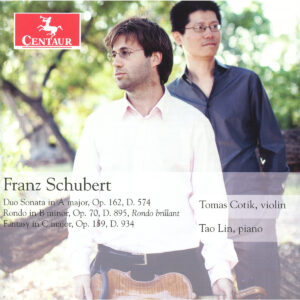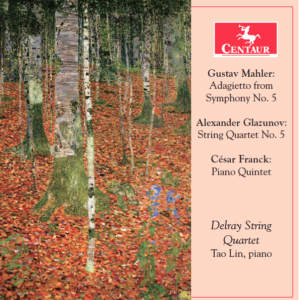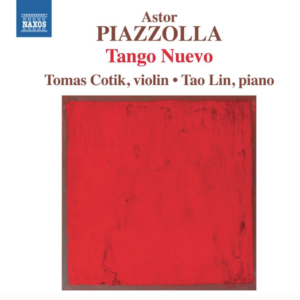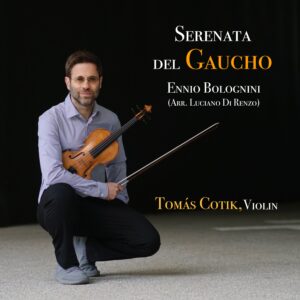TELEMANN’S FORGOTTEN FANTASIAS
by Frank Cooper
Forgotten. The word seems final. That is, until we realize it describes in many cases a temporary condition.
Greeks’ sculptural attainments and Romans’ derivatives were replaced by drastic stylistic changes under the Middle Age’s Christian dominance. Revived in Renaissance Italy, they flourished afresh to become widespread as never before. The phenomenon is visible, perceptible at a glance.
In music, the visual (a composer’s score) represents tones in time (performance). So-called forms and textures (words borrowed from the visual) result from particular groupings of tones as melodies and harmonies – produced by their composers’ styles. When individual manners parallel those winning general approval, popularity results.
Antonio Vivaldi and Georg Philip Telemann were prominent examples in the 18th century. Both musicians enjoyed fame for their works over wide areas of Europe’s geography. On the other hand, Sebastian Bach earned renown in his native land only, and primarily as an organist. All three were forgotten under the advent of that new style today called Classical.
After a hundred years largely in limbo, Bach’s works met widespread attention from the mid-19th century, when the publication of his complete works began. The music of Vivaldi and Telemann, like that of Domenico Scarlatti, had to wait two centuries, until the middle of the 20th century, for thorough revival and their places in the ‘mainstream.’
In Telemann’s case, he out-wrote his contemporaries. Three thousand works emerged from his quill (about half of which survive). A dynamo, born four years before Bach and not surrendering his life until seventeen years after the Leipzig cantor, Telemann flourished as he drew upon what has been termed his “quicksilver musical imagination.” An astute businessman, he published his works more extensively than his contemporaries, including Georg Friedrich Handel. In short, a prolific phenomenon.
Cantatas (sacred and secular), passions, oratorios, psalm settings, motets, concerti, suites for orchestra, and chamber ensembles – almost uncountable in number and all generated upon the principle of basso continuo – were suited to popular taste. Works without figured bass were composed for harpsichord, organ, flute (or oboe), viola da gamba and, of focus here, the violin.
Telemann’s city of residence for the last forty-six years of his life, Hamburg, saw the publication in 1735 of Zwölf Fantasien für Violine ohne Bass (Twelve Fantasies for Violin without Bass). Self-taught as a violinist, Telemann’s natural instincts for the instrument paid dividends. His affinity was such that every note of these often complex pieces lies perfectly, if not easily, under the bow.
Cannily, by calling these works Fantasies, Telemann was free to circumvent the established notions of a dance suite and to follow in the path of his Italian predecessor Arcangelo Corelli, laying out sequences of musical sections according to inspiration’s lead.
Slow openings – Largo, Adagio, Grave – typically allow their performer to feel double stops creating both bass line and melody, and to balance the two anew each time, his ear just above the sounds’ source.
Swift sections – Allegro, Presto, Vivace – follow in startling contrast of mood and texture. Exhilaration results, bravura bowing bringing closely-written notes to vigorous life.
Fugal sections fascinate via their use of a strongly cast motive designed to accompany itself and contrived to play simultaneous roles as upper, middle, and lower voices within the time of a few bars. Telemann delights himself with six fugues in these twelve Fantasies.
Lilting dance rhythms characterize the two sections marked Siciliano. Sections indicated Andante, Dolce, Moderato, Soave, and Piacevolumente (Pleasantly) are informed by near-verbal lyricism – with poetically beguiling effect.
Predictably satisfying for performer and hearer is that each Fantasy – after its intervening shifts of light and shadow mentioned above – will end in spirit-lifting virtuosic display.
Virtuosity in such music means more than apparent effortlessness in performing its notes. It implies interpretation at the highest levels of artistry, the performer’s apt choice from an infinitude of factors implied by what is known of the music’s context – in its day, within Telemann’s world and his personal vocabulary for communication.
Baroque Era composers expected their published works to be treated to individual interpretation. They left unspecified countless details of performance, unlike the late-period Beethoven who crammed forty instructions onto a single page of one of his piano sonatas. Open, too, was the element of embellishment – whether and how to ornament what was notated, common practice from the Era’s beginnings ca. 1600. The governing factor always was knowledge tempered by taste.
Using only a single instrument, the violin, Telemann challenged himself and future performers to deal with all the implications of his score’s self-sufficient few symbols, to bring them to simulated life as coherent patterns of sound, meaningful to the ears of lovers, novices, intellects, even critics. Was this idea original?
Two composers in the German lands had established the genre publicly by publishing now-forgotten works for solo violin (with bass), Johann Walther (Scherzi, 1687) and (without bass) Johann von Westhoff (Partitas, 1696). Unpublished were Heinrich Biber’s Passacaglia (1696) and Bach’s now-called Sonatas and Partitas (1720) – both ironically better known today than the solo works of Walther, Westhoff, and Telemann.
Thus, the remedy of this recording. Telemann’s forgotten works, now-remembered and documented sympathetically, can be assessed by thoughtful hearers, considered by teachers as possible steps for young virtuosi toward the Parnassus of Bach’s unaccompanied paragons, and simply enjoyed as aural amenities to 21st Century listeners’ rich resources of recorded repertoire.
MY INTERPRETATION
by Tomás Cotik
Over the course of the 200 years that Telemann’s music lay largely forgotten, performance traditions were interrupted, altered, and invented; they continued to evolve. Reconstructing a musical, historical, and philosophical image of a work based on the variable and sometimes contradictory nature of existing performance praxis sources is a challenge musicians encounter in interpretation. Different musicians hold diverse opinions on that responsibility. Quantz defined the role of the performer as observing rules of propriety and good taste. C.P.E. Bach believed that the work’s passions must first move the player to be able to then move the listener. Mozart referred to playing all the notes exactly as they are written, with the appropriate expression and taste, so that the listener might suppose the executor composed it himself.
My 2020 release of Bach’s Sonatas and Partitas precedes this recording of Telemann’s Twelve Fantasies for Violin Solo. Building on the stylistic principles I applied to my rendition of Bach’s works, I considered information from treatises by Mattheson, Kimberger, Quantz, Leopold Mozart, Muffat, Couperin, and C.P.E. Bach for my interpretation of Telemann’s fantasies. The Baroque style and the mixed, international “Gallant” style overlapped in time. Composed only 15 years after Bach’s solo violin works, this opus shows traces of the Sonata da Chiesa and the Sonata da Camera, yet has a very different idiom and style.
I recorded this album with a Baroque bow. I enjoy the expressive potential of the Baroque bow, the transparent textures, and the effortlessness with which it changes strings and direction. In this music, the Baroque bow also enhances the ability to differentiate subtle nuances at the beginning and end of each stroke and the numerous subsequent possibilities of connection between those notes. Furthermore, it allows for a lighter sound and quicker, more flowing tempi.
I followed the notion that written note values did not need to be held literally every time. Even in independent parallel voices that have the same rhythm simultaneously, a differentiation in the sustained length or a variation in dynamic or articulation helps to bring out the distinct identity of the lines. Sustaining long bass notes is not always necessary; it is enough to make the listener merely believe and remember the continuation of the line without literally holding the notes out for their full values. I employed tempo rubato, the characteristic fluctuation in time mentioned in various treatises, and emphasized strong-weak metric units to bring life and spontaneity to the phrasing. I also allowed for a degree of improvisatory rhythmic freedom for the dotted rhythms by sharpening the rhythm or adding a pause.
During Telemann’s time, the frequency of the tuning A varied widely even in nearby cities where lower and higher pitches than the modern standard pitch could be found. My choice of recording with the A at 440 was for practical reasons. Having close to perfect pitch, it would unsettle me to play these works in another sounding key. The issue to be considered in terms of intonation is the eternal paradox of the fifth and the third. It is not possible to have it all in one system—nice fifths and nice thirds. My preference is to start with Pythagorean intonation: respecting the pure fifths and fourths that resonate and are congruent with the open strings, using strong melodic tendencies (tight leading tones that are exaggerated even more so in fast movements), maintaining the independence of different voices (giving every line its own weight), and adjusting (rounding up) thirds and sixths intuitively when needed in chords. For this recording, I used synthetic strings that were slightly softer and more resonant than those I regularly use.
I used vibrato as a kind of ornament to the sound but not as a continuous addition to the sound. I often chose fingerings in lower positions where the strings are longer/more resonant, keeping patterns in the sequences and differentiation in the “hidden” voices that happen simultaneously between the different strings. Suspensions, appoggiaturas, notes echappees, passing notes, and trills with resolutions are often spelled out in the text. I seldomly added additional ornamentations for my recording. I find it essential to keep in mind that slurs, tempo rubato, notes inégales, and phrasing also add to the improvisational character of the music. The execution of trills depends largely on their context. Most often, I played them on the beat, starting with the upper note, making exception sometimes according to the context, for example, if a note was approached from the step above or below to keep the melody’s motion.
I find these 12 Fantasies, with their total of 44 fleeting movements, a collection brought to life by the emotions of its arias, the effusive physical drive and momentum of the fast movements, and the whirlwind virtuosity of its rustic folkdance-inspired movements. They are not only “Galant,” amateur market-oriented, pleasant, and inoffensive, but a spontaneous rollercoaster for the imagination, inducing physical movement, both literal and illusory. The juxtaposition of strong, theatrical gestures that contrast with enlightened simplicity, impetuous changes of tension and release, and stagnant-versus-forward motions ignites the imagination. Single voice and literal polyphony create illusions, giving the listener clues to follow different possible solutions to the puzzle of performing multiple voices with one single melodic instrument.
Not least, my hope is to offer a direct experience of the doctrine of the affections, which dates back to the time these pieces were written, and states that music is capable of arousing a variety of specific emotions within the listener.



